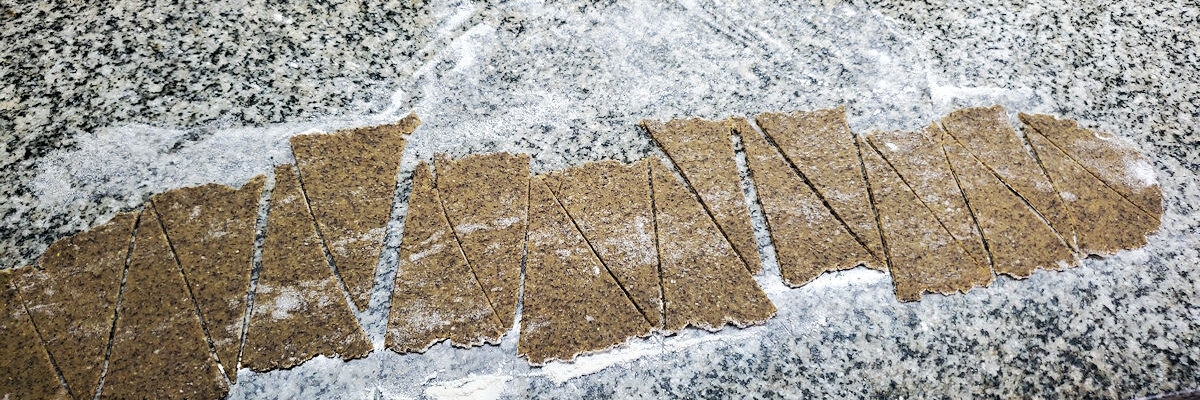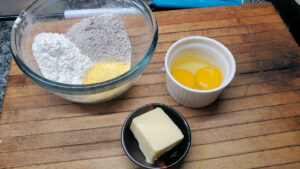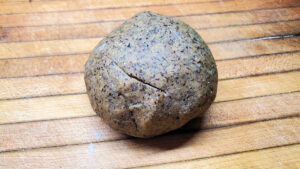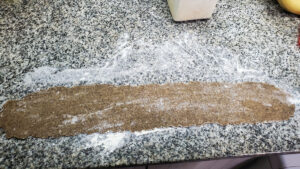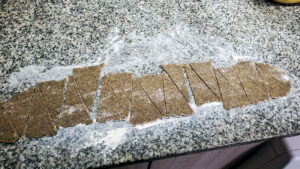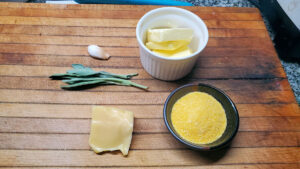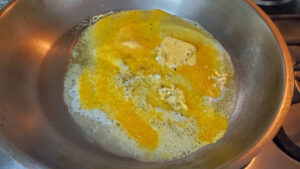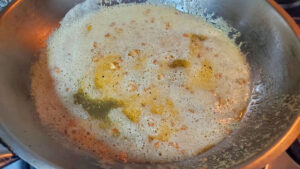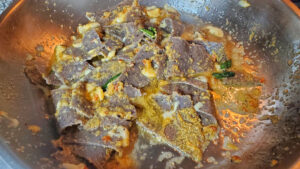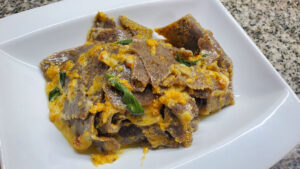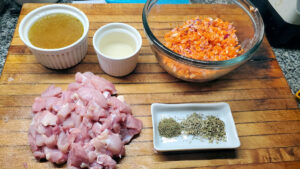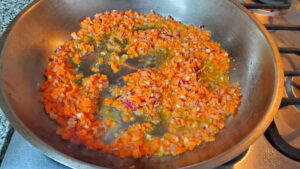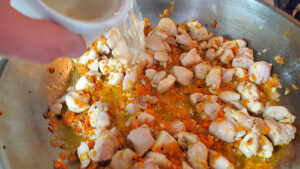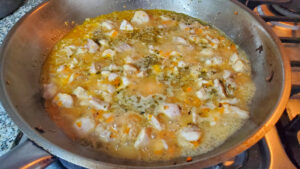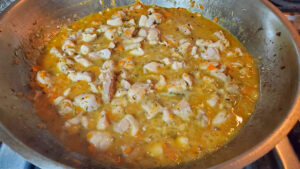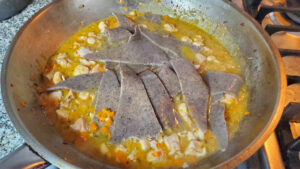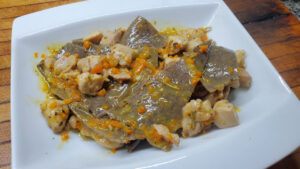Blecs
After that, it seems like there’s no more to say. It just, at least in English, has a sort of finality to it. But, it’s the Slovenian name for a pasta from the Istrian penninsula, overlapping into far northeastern Italy, meaning “patches”. The Italian name for the same pasta, Biecchi, means “bent” (also “sinister”), which doesn’t jive quite as well with this “peculiar pasta” shape from the region. I learned them as biecchi, but feel free to use whichever name you want, should you find yourself in conversation on the topic.
There are two really classic preparations of this pasta, and so, to be fair, I’m going to offer up both. I’m making really small quantities because I’m in my annual bachelorhood when Henry heads off to spend two months with his family (should the current political crisis get resolved by mid-March, I’ll go and spend the last two weeks of the month with them as well, but if not, then, not).
Let’s start with the pasta itself. It’s classically a mix of buckwheat and wheat flours, and cornmeal. You can actually make this fully gluten-free by using just buckwheat and cornmeal, though I’d probably recommend mixing in a bit of xanthan gum to prevent it from falling apart. This is enough for two portions – 80gm bread flour (something fairly high gluten), 50gm buckwheat flour, 25gm cornmeal, 35gm softened butter, 1 egg plus 1 yolk.
Because of mixing in the butter, I find this one easier to do in a food processor with the dough blade – and in short order, I had this lovely ball of dough. Wrap it and set it aside for about 20 minutes.
With this quantity, I just split the ball in two, and rolled each piece out into a long “rectangle”, roughly 3″ (7-8cm) across. Because of the lower gluten content overall, this makes a very soft, easily rollable dough. You want to roll it out to be about 1-2mm thick, i.e., about the thickness of a tortilla, or wrap.
And then, cut it in long, thin triangles.
Let’s move on to our two preparations.
The first, Biecchi con burro e montasio (butter and montasio cheese), or sometimes just the pasta name, biecchi, because it’s such a classic of the region. Butter (75gm), cornmeal (25gm), garlic (1 clove), fresh sage leaves (6), and montasio cheese (40gm). If you can find the last. Not available here, the closest decent substitute is a somewhat aged gouda.
Over low heat, melt the butter and add the cornmeal and thinly sliced garlic.
The butter will foam and gradually toast, along with the cornmeal and garlic. When it’s all nice and golden…
Remove from heat and add the cooked pasta (this time we’re not adding cooking water to it, just whatever clings to the pasta), the sage leaves, and the grated cheese. Toss to coat well.
And, serve. It sounds like an odd sort of preparation, no? I mean, coating pasta with toasted cornmeal. But at the same time, there are various pastas out there that are coated with toasted breadcrumbs, we’ve even made some in our step-by-step demos here. I will say it’s not my favorite preparation for this pasta, I just find it a bit too much carb on carb for my personal tastes, but it is a tasty dish.
Let’s go to the one that I personally like more!
Here we’re making Biecchi con sugo di pollo, basically, “with chicken sauce”. We have diced up boneless chicken thigh/drumstick (some people leave the chicken pieces whole and just serve them atop the pasta which as been coated with the sauce that the chicken’s cooked in, but for me, that kind of misses the point of being a pasta sauce. So be it. We have chicken stock, white wine, a mix of finely chopped carrot, onion, and garlic, and we have a trio of dried herbs (fresh is fine too, use a bit more) – rosemary, thyme, and marjoram (or oregano if you can’t find marjoram).
In a little olive oil, cook the chopped vegetables with a little ground pepper and just a pinch of salt. Not much salt because you’re going to get most of the salt from a combo of cooking down the chicken stock (unless you’re using a salt-free one) and the pasta water.
I guessed I missed taking one photo. After you’ve cooked down the vegetables for about five minutes, add the diced chicken, and cook for another five, to just put a little color on it. Then, deglaze with the white wine, and cook that off.
Add the herbs and the chicken stock and simmer for about 15-20 minutes.
It should thicken up nicely as it reduces.
Add the cooked pasta and a ladle of the cooking water and toss to coat and rethicken up. This sauce will cling really well.
And, serve.
I particularly like this sugo di pollo, it’s just such a simple and easy to make sauce that you can use for other pastas as well.
